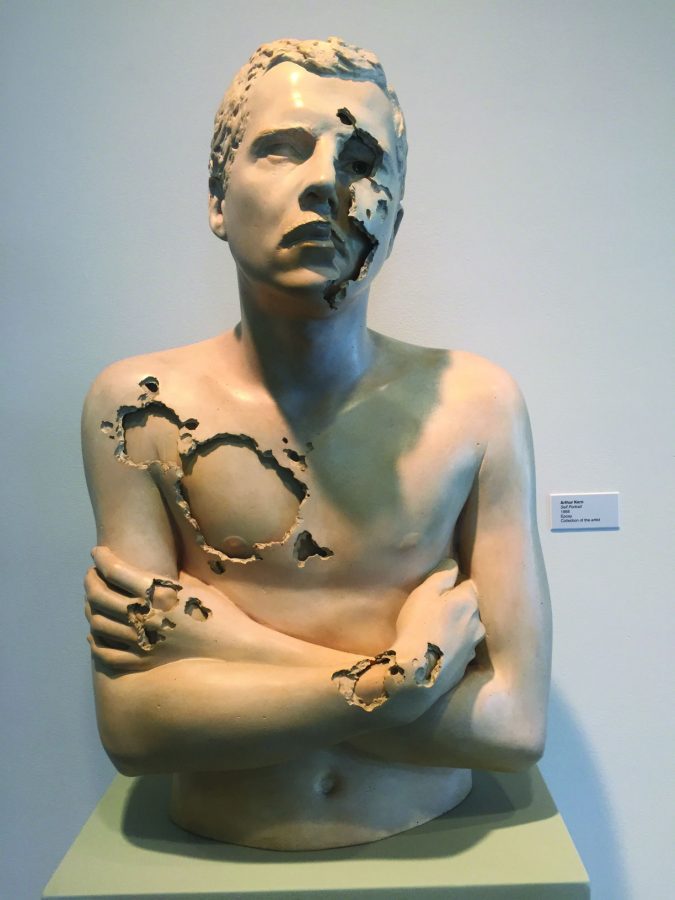Former art professor exhibits previously unknown collection of work
April 6, 2016
Naked pale human figures sprawl across the walls, chunks of their bodies chipped away and decaying. A bust with just one eye gazes out from its disfigured head.
Former Tulane studio art professor Arthur Kern currently has an exhibit of over 60 sculptures on display until July 17 at the Ogden Museum of Southern Art. Kern had never displayed any of his pieces in any public forum until the Ogden recently contacted him.
Kern’s sculptures had been in his basement until John Berendt, the exhibit’s guest curator, heard of the work.
“As soon as I left [Kern’s] house, I said we should have an exhibit about it,” Berendt said.
When Kern embarked on his art career over 60 years ago, he initially stuck close to his roots in painting and drawing, but as years passed he decided to experiment with sculpture.
While the Ogden classifies his work as surrealist, Kern feels like this category isn’t completely representative of his work.
“The term describes some of my work, but the surrealists were interested in Freud’s ideas,” Kern said. “I find that interesting, but I don’t find I belong to any school.”
Kern finds it difficult to classify his sculptures into any particular category or style of art because, like any piece of art, his work can easily fall into a multitude of “-isms,” schools or styles.
Most of his sculptures depict human and equine figures with a somewhat nontraditional twist to them. Some are layered sculptures, revealing parts of the human face or a second layer of detailed skin and body parts, while others are amalgamations of human and equine forms.
He struggles to pinpoint what truly inspires him to create art.
“I’ve made art since the third or fourth grade, and it’s always been a search or a quest for something,” Kern said. “It’s always been a way of insight for myself. Sometimes like a disease even.”
Kern admits that he was never too interested in most of the art world, drawing inspiration directly from his own subconscious or thoughts and ideas.
“I could work better by not being too involved,” Kern said. “I just like quiet.”
Glass blowing professor Gene Koss met Kern when they taught together in the art department, and Koss said he always admired Kern’s work.
“He works away from the crowd,” Koss said. “He’s not driven by ego or sales. The exhibit had very surrealist stuff. [His work] was very much like poetry, and his work reflects that and the fact that he is such a quiet man.”
Drawing and painting professor Ronna Harris also worked with Kern, and is a longtime personal and professional friend. Harris felt that Kern strives for his work to be open to interpretation.
“[Kern] never will give his narrative of his work,” Harris said. “He believes the viewer is the individual to think and feel what the work is about.
He wants to continue to sculpt in the upcoming years, always craving to make something new. However, most of his pieces take an inordinate amount of time, ranging from a couple months to several years to complete.
Most of his work incorporates aluminum, glass, polyester or other ceramic, 3-D materials, all of which have a strong gallery presence, especially the life-sized horses. The exhibit is quite an experimental and experiential show, asking the viewer to get in touch with their own subconscious, something not all contemporary art demands.










Leave a Comment